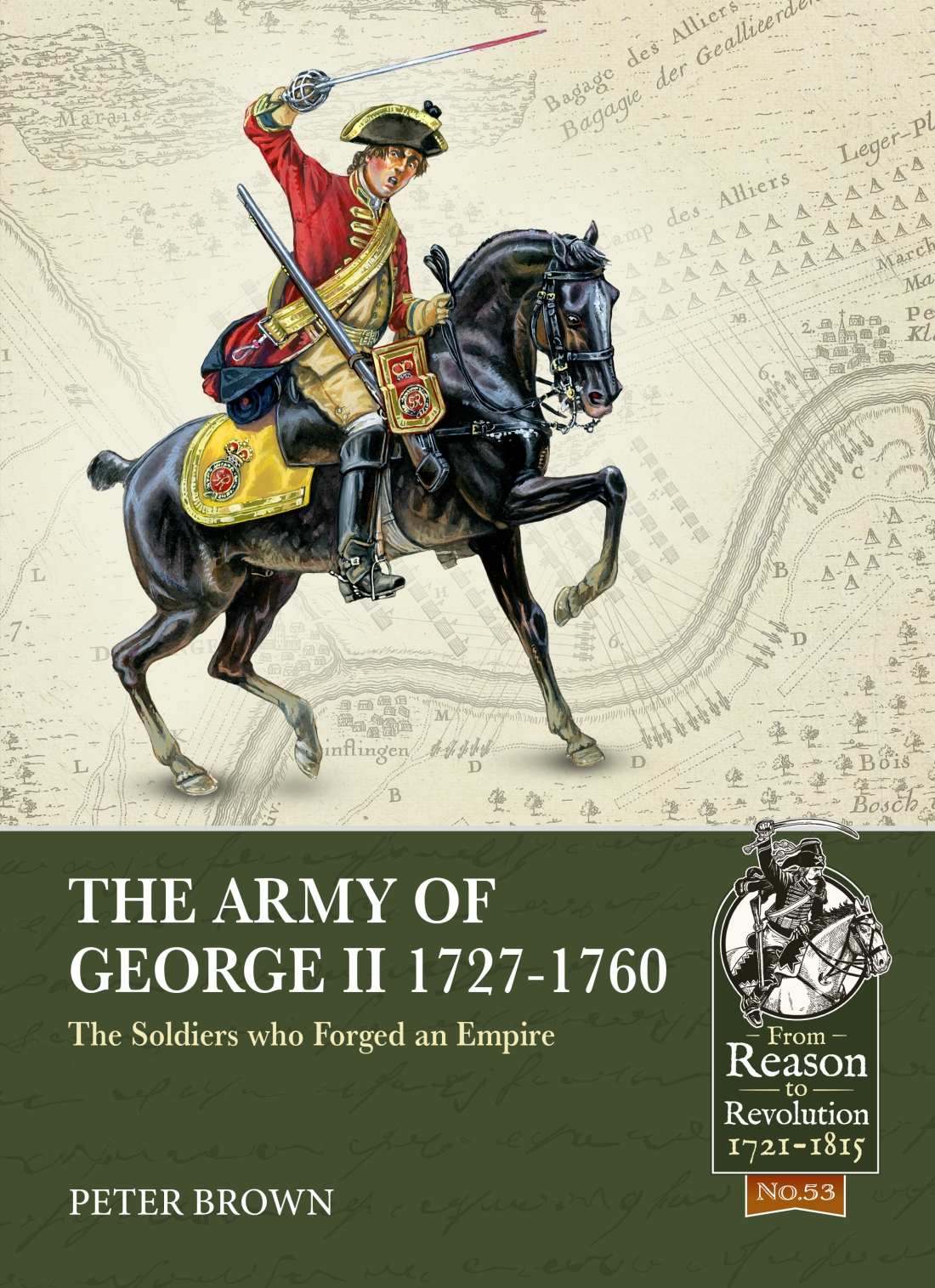Peter Brown talks about the writing of his recent book for our From Reason to Revolution 1721-1815 series.
If you’re a fan of the British Army of the eighteenth century then you may feel that you don’t need to read this book. After all, much ink has been spilled on the subject over the years, with uniform guides and accounts of the battles and campaigns easily available. Believe me, I was acutely aware of how much was already in print when I sat down to write it.
However, almost all of the work currently available on the army of George II provides the reader with a snapshot of army life. There are many books on the French Indian War, for example, the Jacobite ’45, or the campaign in Germany during the Seven Years War. What appeared to me to be lacking was a view of the army ‘in the round’, so to speak; looking at every aspect of it from the accession of George II in 1727 to around the time of his death in 1760. How did it develop? How was it recruited, trained and disciplined? What were the officers like and how did they learn their trade? What about the medical services, the system of command and control and the changes to all of this that had to be made on campaign? We all know that the army marched to battle, but how exactly was this achieved and who was responsible if it all went wrong?

Filling all of these gaps in our knowledge became the aim of the book and it often took me down some very unglamorous roads. I had to begin with the accounts, looking at how the army was funded and who exactly held the purse strings. Readers with a love of military history often do not share a love of eighteenth-century accounting, but none the less, the detail of how the army was funded is necessary if one is to understand why it was always short staffed, under equipped and often much too small to carry out the tasks allocated to it. I also had to explore the often-overlooked topic of logistics, which any military man will tell you can make or break a campaign. The housing, supply and movement of the army from A to B was no easy task and this book explores the intricacies of the system alongside its obvious failings.
The organisation and uniforms of the infantry, cavalry and artillery are dealt with in depth, with a chapter on each arm that tracks the development of their uniform and structure as the century wore on. Details are also provided of their colours, officer distinctions, and the role of the various officers in battle. The medical facilities available to the army, both on campaign and at home, is not a topic well covered outside academic circles and I wanted to cover this, especially in regard to the aftermath of battle and the treatment wounded soldiers could expect. I was certainly surprised by the key role the soldier’s wives played in this, alongside the general support that they provided not only to the men, but to the regiment they were attached to. Indeed, they were, in many ways, an invisible and often unrecognised logistical arm. The final chapter looks at how the men and their families mustered out, sometimes with a pension but more often simply laid off when the war ended and left to fend for themselves.

Writing this book was not all hard slog. From the chapter on recruitment, through the court martial system and on to the officers and their ‘duels of honour’, I found much to smile about. The British squaddie, it would appear, has not changed over the centuries and if there was trouble to get into he was sure to find it. There are some great little stories that I was keen to retain as they show off the indomitable spirit of the British soldier whilst showing the reader that army life was not all floggings and drill.
Going back to my opening paragraph, my aim throughout this project was to fill that hole in your knowledge that previous books on the subject had failed to do. Hopefully by the end of it you should have a complete understanding of the eighteenth-century British Army. It was a joy to research and write and I do hope you enjoy it.

You can order The Army of George II from our website: https://www.helion.co.uk/military-history-books/the-army-of-george-ii-1727-1760-the-soldiers-who-forged-an-empire.php

